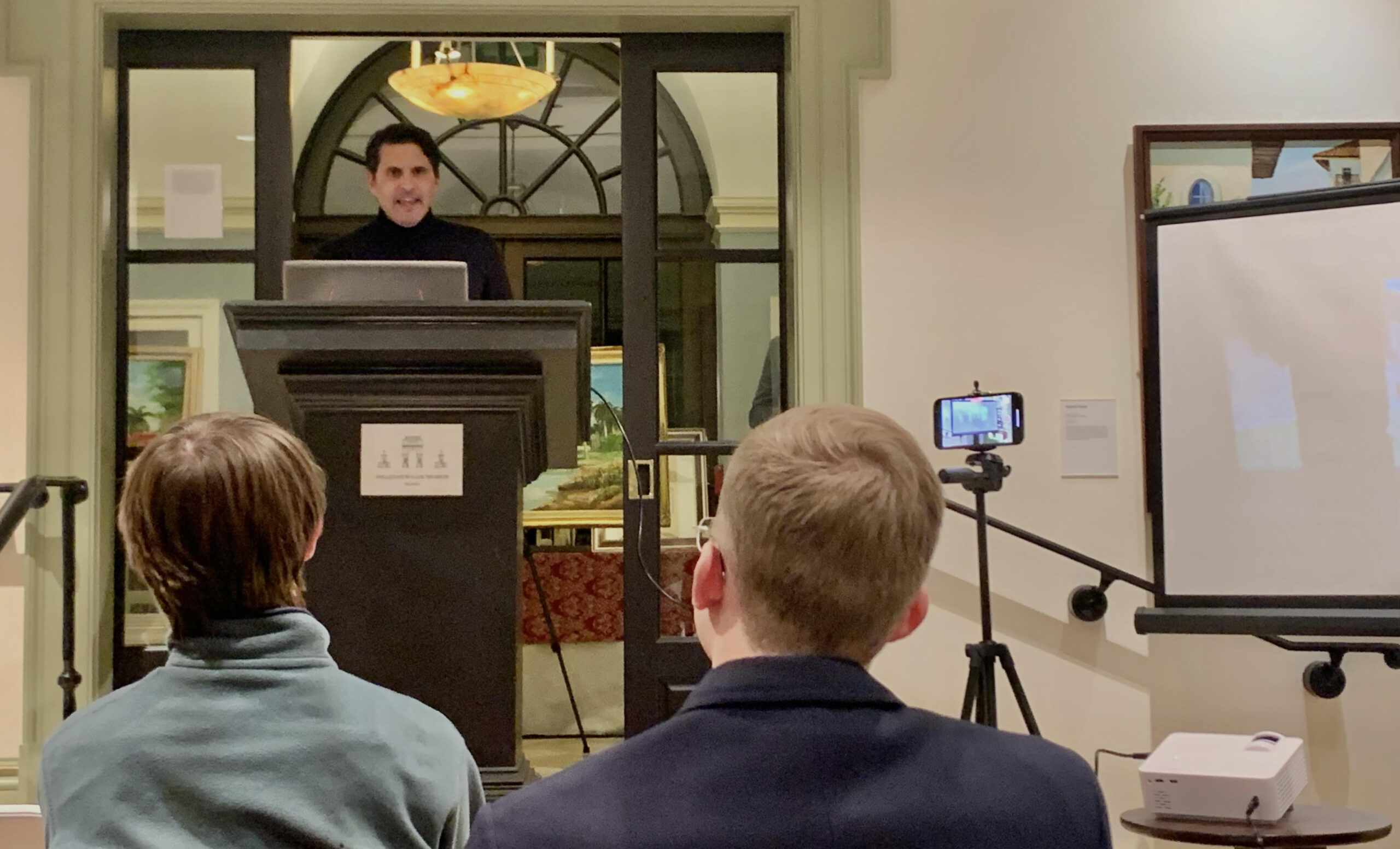Watch the online seminar hosted by Darius Arya here:
Throughout time, many great countries and civilizations have compared their successes and failures with those of the Roman Empire. Today it is possible to identify many similarities between ancient Rome and contemporary America: pandemic causing severe setbacks, the economy affected by inflation, and foreign wars challenging the political landscape.
Many Western societies are still influenced by ancient Rome. Religiously, with the power of the Catholic Church that once ruled as the Holy Roman Empire, and culturally with the humanistic studies of the Renaissance. The treatises, historical accounts, and political discourse of authors including Cicero, Livy, and Tacitus. Politically, the concepts of civitas, libertas, potestas and res publicas have shaped the government systems of democratic countries around the world.
At its height, the Empire was incredibly diverse and multi-ethnic. The extensive territory was one of its most impressive qualities, and also one of the factors that eventually caused its decline. The fall of the Roman Empire was a long and gradual process. Significant turmoil and fragmentation of the territory began in the 3rd century CE, with smaller kingdoms fighting for independence and breaking away. Emperors Aurelian and Diocletian managed to reconquer these areas, soon establishing multiple capital cities throughout the Empire to facilitate its control and management.
Rome faced many changes during the 4th century CE. The early years were marked by the civil war between emperors Maxentius and Constantine. After defeating Maxentius in the battle of the Milvian Bridge in 312 CE, Constantine asserted his power as the sole ruler. One of his most important resolutions was to end the Christian persecution, which until this moment was an illegal religion in the Roman Empire.
Later, in 395 CE, the Empire was officially split into East, with Constantinople as the capital, and West, still governed from Rome. The 4th and 5th centuries were marked by numerous invasions and attacks from neighboring kingdoms, including the Vandals, Anglo-Saxons, and Visigoths. This caused many challenges to the territorial integrity of the Empire.
As a result of these issues, and together with the questions that emerged from the Catholic Church as a new political power competing with the Emperor, the Western Roman Empire fell in 476 CE, when the last emperor, Romulus Augustulus, was deposed. In the 6th century, the Byzantine Empire was thriving with Emperor Justinian. He was responsible for reconquering North Africa and the Italic peninsula, rebuilding the Hagia Sophia in Constantinople, and revising Roman law.
The post-Justinian period of the 7th and 8th centuries were characterized by the rise of the Arab Empire and Islam in the East. Meanwhile, the Italic peninsula fragmented into independent city-states, a geopolitical structure that was maintained for the following centuries.
Bibliography
- Bowersock, Glen W. “The Vanishing Paradigm of the Fall of Rome.” Bulletin of the American Academy of Arts and Sciences 49, no. 8 (1996): 29–43. – https://doi.org/10.2307/3824699.
- HARRER, G. A. “ANCIENT AND MODERN ROME.” The High School Journal 5, no. 7 (1922): 183–84. – http://www.jstor.org/stable/41310142.
- Pelikan, Jaroslav. “The Two Cities: The Decline and Fall of Rome as Historical Paradigm.” Daedalus 111, no. 3 (1982): 85–91. – http://www.jstor.org/stable/20024804.
This content is brought to you by The American Institute for Roman Culture, a 501(C)3 US Non-Profit Organization.
Please support our mission to aid learning and understanding of ancient Rome through free-to-access content by donating today.
Cite This Page
Cite this page as: Darius Arya, The American Institute for Roman Culture, “Seminar – Decline and Fall of Rome in today’s Context” Ancient Rome Live. Last modified 12/15/2021. https://ancientromelive.org/seminar-decline-and-fall-of-rome-in-todays-context/
License
Created by The American Institute of Roman Culture, published on 12/15/2021 under the following license: Creative Commons: Attribution-NonCommercial-ShareAlike. This license lets others remix, tweak, and build upon this content non-commercially, as long as they credit the author and license their new creations under the identical terms. Please note that content linked from this page may have different licensing terms.



